Not for everyone is sport just another mode of entertainment. Not for everyone is sport a hard-fought battle, played for pride and prestige. For some, sport isn’t even a dividing barrier between two entities. For some, sport is poetry on a garden patch: an arena for a genius to exhibit his artwork in the most unbelievable of circumstances and in the most adverse of conditions.That is why, some can’t help but romanticise the game of cricket, for it offers, every now and then, men with such skill that they could paint a masterpiece in thin air, creating and recreating it at ease over the years. This slideshow is for the connoisseurs who love the game for its beauty and not so much for the battles, for the exotic and the artistry and for those great men who wielded the bat not to insult their opponent but to adulate the game itself and exult in it.
#10 Ian Bell
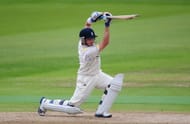
Only time will tell what tales would be told about Ian Bell. He is England’s best batsman and has been so for a while. Better than Kevin Pietersen in batting skills, better than Alastair Cook, better than Trott. He could be Gower’s protégé for all we know, yet his career has been dotted with as much recklessness as grace.
Bell cuts the ball wide outside off stump with ferocity. When it is a touch closer, though, the ball will be sent smoothly sailing through the covers, almost in glee for the flirtatious nature of his bat. Bell is a touch player who hates hitting the ball; he belongs to the diminishing generation of batsmen who believe that the ball is not an object to be hit, just caressed.
#9 Brian Lara
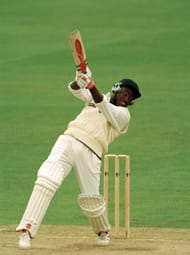
That he is a West Indian is a sufficient description. His calypso batting personality, in spite of being so gentle outside the batting arena, allowed him to be arrogantly artistic. The batsman who walked even for LBW decisions, at times, had a poetic back-lift and a bat swing that reminded of the much-taller Gary Sobers, whose record in Test cricket he broke. Lara never had Sachin Tendulkar’s steadiness and calculations.
On song, he could hit everything, anywhere he liked. Graceful, even when out of touch, he was not one to cede ground to the opponents. Lara was probably amongst the last remnants of a great team and saw its decline, eventually hanging up his boots even though he could have easily owned his place in a weaker batting line-up for much longer.
#8 Kumar Sangakkara
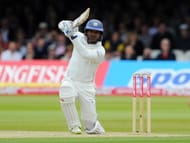
A sublime batting average of 58 in the modern era and only next to Don Bradman in double hundreds (10), Kumar Sangakkara rivals Jacques Kallis to being the Most Valuable Player (MVP) of the generation: wicket-keeper, captain, No.3 batsman and crisis-man all rolled into one. A fierce competitor, Sangakkara is gifted with the tall left-hander’s elegance, seen in his cover drives and back foot punches.
His bat starts higher than most sub-continent batsmen, but, given how early he picks the line and length, it has rarely troubled him, offering him the added bat-speed to send the ball racing away.
#7 Gundappa Vishwanath
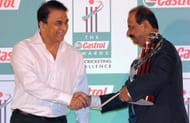
On a lot of overseas tours and bad wickets, Gundappa Vishwanath along with Mohinder Amarnath came out as India’s best batsmen. Vishwanath, hailing from Karnataka, was probably the inspiration for two elegant Hyderabadi players, Mohammad Azharuddin and VVS Laxman.
Unlike them, he wasn’t tall and hence didn’t have that added advantage on bouncy wickets. Nevertheless, he was India’s crisis man, who had a feline way of dealing with menacing bowlers. He rose with the delivery and square cut them, waited almost for an eternity to late cut turning balls out of wicket-keeper’s hands and glanced mid-stump deliveries down to the fine leg boundary at will.
#6 Damien Martyn
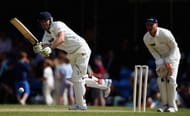
Damien Martyn was a definite cog in the ‘Invincible’ wheel of the Aussies in early 2000s. He was so soft-spoken, so understated, that somehow he managed not to be noticed by most even while playing as a part of the all-conquering Australian team.
He was very strong off the back foot, his square drives on bouncy wickets soothing the eyes of connoisseurs. He was very similar to sub-continent players in his on-side play. Where Ponting, his more famous batting counterpart, lunged and lurched, Martyn let his wrists do all the talking, creaming deliveries with ease. Martyn lost many years of his career and limelight to brashness, until he turned it around to become one of the most versatile batsmen on all surfaces against all attacks. 67 Tests is not much for a batsman of his quality, but then they were mostly as a part of an invincible squad brimming with greats who even won the World Cup. Most cricketers will take that.
#5 David Gower
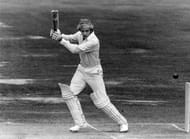
For years England boasted of David Gower, where Australia had none until Mark Waugh came along. Gower was perhaps the prototype for batsmen like Mohammad Azharuddin, Mark and VVS Laxman, batsmen who made cricket look like artistry; the bat looked like a sword that was meant to swirl and whirl in gracious movements you couldn’t quite comprehend until the motion was completed and the ball raced away in an intended direction that was improbable for anyone else, for the given delivery.
8000 runs in Test cricket is a great achievement for most. On Gower, it was an underachievement of the same class as a wasted genius, much like Mark who finished almost around the same mark with a similar average.
#4 Mark Waugh
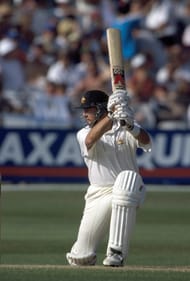
When Mark Waugh announced his retirement, after being dropped from the Ashes squad, losing the race to his brother Steve to stay in the side, it was the end of an era of nonchalant grace, a reckless, languid elegance and a velvet-edged exhibition of making batting look easy.
Mark’s on-side play was a coaching manual in conserving movement, an effortless flick of the wrist in front of the pads, where nothing moved more than it needed to. He was not flamboyant, not someone who danced menacingly down the pitch, not someone who pulled out ferocious cuts. He was a surgeon who used the bat like a scalpel, a rarity given the pitches he was brought up on. His foot movement was like that of a ballet dancer, almost antagonistic to the gritty, workman-like innings played by his equally distinguished brother.
#3 Mahela Jayawardene
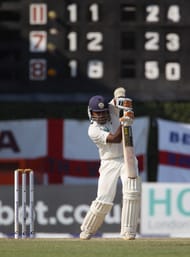
Nasser Hussain’s description of his batting in the World Cup finals of 2011 was bordered on poetry but well-deserved. Jayawerdene is a touch player, ultra-aggressive in everything he did, except when he eased, coaxed and coquetted the ball through the arc between covers and square leg. He pulled and hooked effortlessly, as well, but his extra-cover drive, with his elbows going up like the piston of an engine creating a lovely ellipse in the air, is textbook: not the one with harsh rules but the graphic art version.
When in form, his footwork was nimble, allowing him to loft and drive spinners at will.
#2 Zaheer Abbas
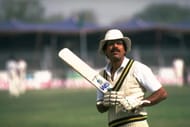
The elegance of Zaheer Abbas and the intricate artwork of genius embedded in it is something Asian cricketers will always be proud of. Nicknamed the Asian Bradman and boasting of an unheard of 45+ average in ODIs in the 80s, Abbas was a handsome batsman; handsome, because his bat swing gave him the aura of a judge – sitting on the bowler – wondering where the ball was to be dispatched.
He drilled the great West Indian bowling cordon of late 70s effortlessly through covers, flicked Andy Roberts and Michael Holding and square drove all day, all done with a stance that was a little cramped (feet too close) and a bat that swayed for a few moments in the air before swinging beautifully down like the henchman’s sword.
#1 VVS Laxman
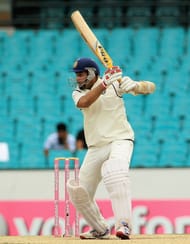
VVS Laxman, at the peaks of his prowess, looked bored against teams whose names didn’t start and end with an ‘A’. Against the Australian attack that boasted of Glenn McGrath, Jason Gillespie, Brett Lee, Shane Warne and a few others, he looked content. Great artistry needs a great canvas; perhaps only Australia ever came close to giving him one, although he showed glimpses of his magic against South Africa, too, especially in ‘that’ Durban test.
Laxman, perhaps the most sluggish of Indian fielders, a perpetual presence in the slips, is a no-fuss gentleman, who was likely to pat a pace bowler after just having flicked his 145kph delivery on the off stump behind square believing it was a good ball, just not good enough for his wrists. In flow, which was invariably when the rest of the Indian batting failed, Laxman caressed the ball through gaps, like he was orchestrating a tender kiss between his bat and the ball, not a slap.
Even his cut behind point and the pull in front of square, amongst the most aggressive shots on the cricket field, were touches of exotic love for the cherry and almost requested the ball to head its way on the velvety turf to the boundary so that he doesn’t need to run.
Brand-new app in a brand-new avatar! Download CricRocket for fast cricket scores, rocket flicks, super notifications and much more! 🚀☄️
